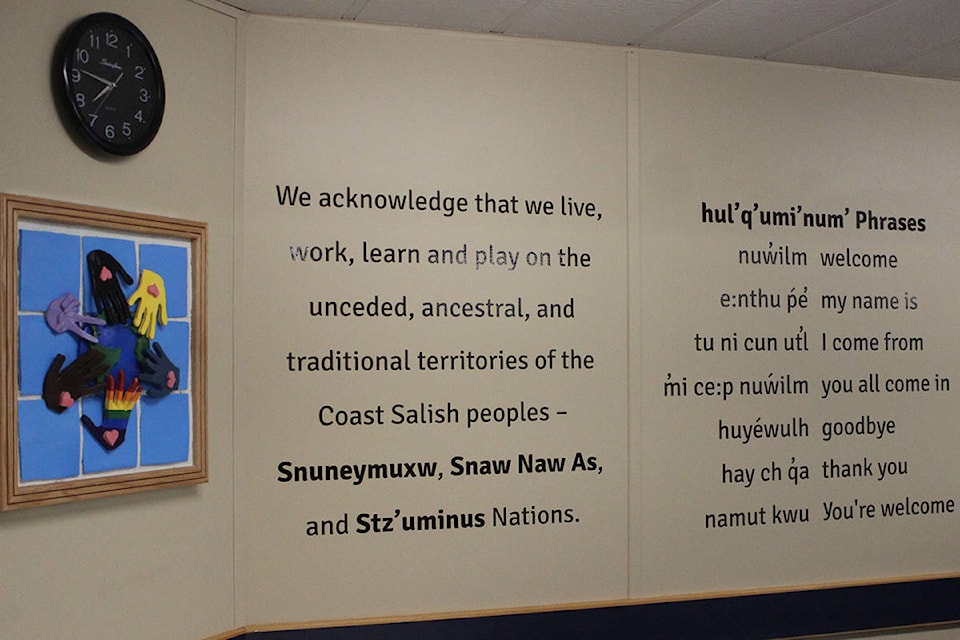New Nanaimo-Ladysmith school district policy will consider Indigenous language when it comes to naming schools.
Nanaimo Ladysmith Public Schools’ trustees unanimously voted, at a June 23 meeting, to implement a draft policy related to naming or re-naming school facilities.
Names deemed fit by the board will be selected and may honour people, “places of historical or geographical prominence, may represent the intent of the school or may reflect an educational value or interest,” states the policy. Schools won’t usually be named after living people.
Facilities may be named to reflect the language of the area First Nations, Hul’q’umi’num, but in order for a Hul’q’umi’num name to be considered, it must consented and “gifted” by local First Nations, states the policy.
At the meeting, Charlene McKay, school board chairperson, said it is important to acknowledge the language, which is the language of the First Nations – Snuneymuxw, Snaw-Naw-As and Stz’uminus – on whose traditional territories school facilities are situated.
“Revitalizing language, Indigenous language … is an important responsibility that the board should undertake as a true component of reconciliation,” said McKay. “It’s in the calls to action from the Truth and Reconciliation Commission, how important Indigenous language is. We know that there are only so many speakers left that speak fluent Hul’q’umi’num and so any efforts that the school district can make towards the goal of revitalizing that language is vitally important.”
The school naming or re-naming process will see the board chairperson naming a committee to recommend names for trustees to consider, according to the policy. In addition to area First Nations, Métis and Inuit communities, affected municipalities, regional districts, students, staff and the other community members will be consulted as well.
If consideration is given to a person, approval will be sought from family, the closest living relative, or the actual person, in the event they are still alive.
The name will be chosen at a board meeting, according to the policy, and public consultation will take place for at least 30 days.
There are also allowances for re-naming facilities and situations may include if a “municipality or regional district re-names a geographic reference associated with the school,” said the policy. In addition, facilities can be re-named if the current name is not in line with board policies or if the community asks the board to rebrand a facility so that is in line with its policy.
In such circumstances, trustees will receive a report detailing any potential costs related to renaming.
RELATED: Nanaimo-Ladysmith school district adopts reconciliation policy
reporter@nanaimobulletin.com
Like us on Facebook and follow us on Twitter
